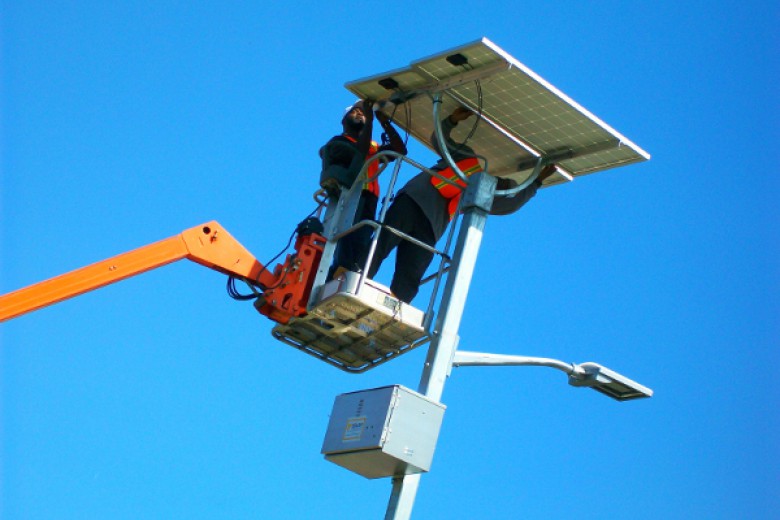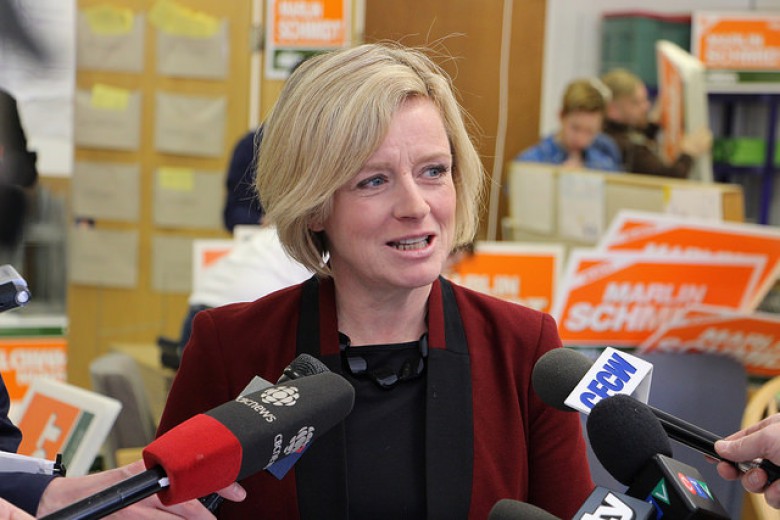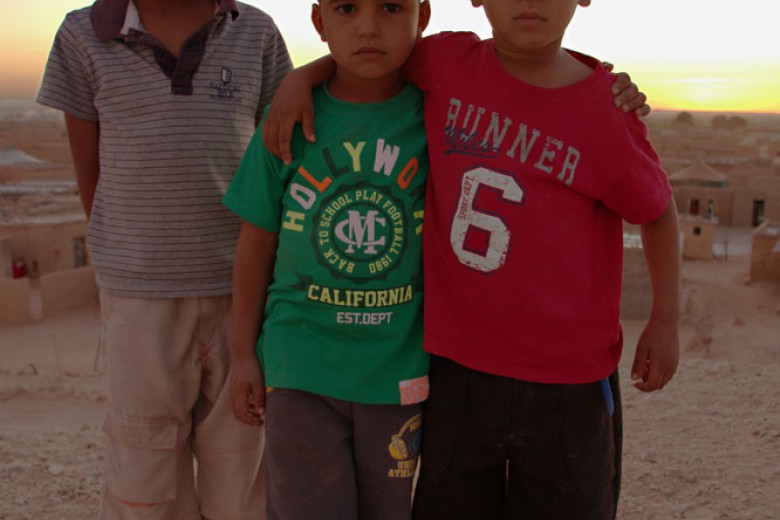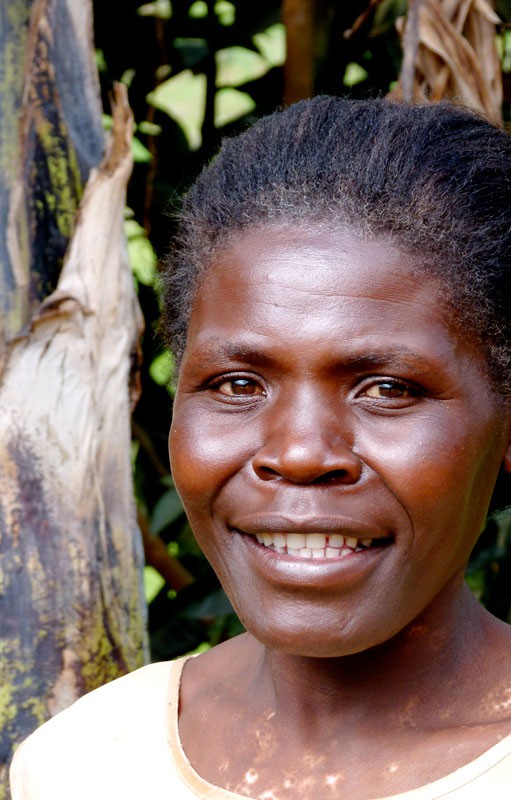
Ninsiima Florence is working in her field of vegetables in the village of Nyakiju, Muyumbu, in southwestern Uganda. She’s swinging the efuka, a traditional hand hoe that’s used by the Abataka, the “people of the soil,” as Florence’s cultural group, the Bakiga, are called. She strikes the iron earth with all her strength, cracking the hard surface open to reveal an underbelly of soft mineral soil.
Florence grows annual cash crops of cabbage and cauliflower, which she sells to cover school fees for her children and household costs, including food, clothing, transportation, and antiretroviral drugs: both she and her husband are HIV positive.
In the local language of Rukiga, Florence is called an omuhingi, which translates into “person who digs.” Florence is a subsistence farmer. As such, she is part of about 80 per cent of Uganda’s population who live in villages, own a handful of garden plots, and grow food for daily survival. The majority of subsistence farmers in Uganda are women, and in southwestern Uganda in particular, women are culturally responsible for digging and growing food to feed their families.
Today Florence is planting cabbage seedlings grown from seeds purchased at the marketplace for 12,000 Ugandan shillings (C$5.06) per packet. It’s a steep fee considering her household income amounts to only $1 to $2 a day.
For three months, Florence will religiously tend to her vegetables: hand weeding, managing pests, and applying organic manure. When there’s no rain, she’ll use a washing basin to haul water from a nearby dugout to refresh her parched garden.
“If you don’t water, you can’t earn school fees,” says Florence. And if there’s no money for school fees, there’s no money for food. In Uganda, there is a major gap between the subsistence farmer and government support.
Less than four per cent of Uganda’s national budget for 2013-2014 was allocated to agricultural support for farmers, leaving the Ugandan majority alone in their fields of cabbages, digging the earth, and saving for their own burials.
But the gap between government and farmers is proving to be an ideal environment for foreign models of development which means that help for Florence, and other subsistence farmers in Uganda, is on the way – a strategic kind of help, anyways.
Wealthy nations of the G8 are proudly carrying the flag of a new international aid paradigm that is preaching “bolstered food production” and is targeting farmers and fertile lands in Africa and, in particular, sub-Saharan Africa.
They’re calling it the New Alliance for Food Security and Nutrition and inviting the private sector to the table to “partner” with African governments and small farmers. The G8’s stated goal is to increase food production through the modernization of traditional subsistence agriculture in Africa, stressing mechanization over human labour, improved (that is, genetically modified) seeds over indigenous seeds, synthetic fertilizer over organic manure, and chemical pesticides over rotational crop management.
Increasing Africa’s crop production, the G8 claims, will also increase food security and improve the staggering rates of malnutrition. There’s no doubt that malnutrition is a critical concern in Uganda, causing stunted growth in children and anemia in pregnant women, and increasing the rate of dropouts from primary and secondary school. But are the G8’s motives only about tackling malnutrition, or is this aid paradigm more about implementing policies to privatize agriculture in Africa?
Critics, including food activist and writer Raj Patel, argue it’s the latter. Writing in the Guardian, Patel suggests the New Alliance is a tool to “squeeze the politics out of hunger” by wilfully ignoring the root causes of malnutrition – including socio-economic inequality and poverty – and profiting from increased control of seed, land, and food production markets.
Patel demands people take a long, critical look at who’s around the G8 table: politicians, seed and agribusiness corporations including Monsanto and DuPont, and giant do-gooder NGOs and foundations like the Bill and Melinda Gates Foundation. Monsanto has already pledged $50 billion to the New Alliance, eager to secure its place at the head of the table and Africa’s seed markets.
The G8’s New Alliance isn’t a dinner table where guests ask each other to pass the meatloaf and democratic discourse determines who gets how much of the meal. It’s based on free-market enterprise.
So how much will Monsanto gain in comparison to farmers like Florence? The past might provide an answer, but the New Alliance has strategically “dissolve[d] history like a tooth in cola,” says Patel.
With a closer examination of Uganda’s agricultural history, the G8’s New Alliance becomes a flashback to the International Monetary Fund’s structural adjustment programs (SAP) of the 1990s. The SAPs also pushed for increased food production and liberalized agricultural markets, promising economic and social gains. So what happened?
Florence’s cabbage seedlings today can provide part of the story. According to Tukundane Cuthert, sustainable agriculture program coordinator at the Ugandan NGO Caritas Kabale, subsistence farmers used to propagate indigenous cabbage by cutting the bottom stalk into quarters and replanting into soil. Farmers would choose the most ideal cabbage, harvest the head for consumption, and replant the stalk.
In the 1990s, Uganda’s markets opened for agribusiness, adhering to the terms of the SAPs, and shortly thereafter, GM cabbage seeds imported from the Netherlands began to flood the local markets.
“The Netherlands cabbage was adapted by force [in Uganda],” said Cuthbert. While the indigenous cabbage took six months to harvest, the imported seed took only three months. Subsistence farmers were scrambling to produce more food, not for household consumption but for sale and export, so they bought the new seed on the market and gave up the power to propagate their own cabbages.
The SAPs kick-started a cycle of farmers buying and selling seeds, ultimately building the farmers’ dependency on seed companies. The lack of government regulation on prices, and increased competition on markets, resulted in farmers losing money to the middleman and barely covering their production costs.
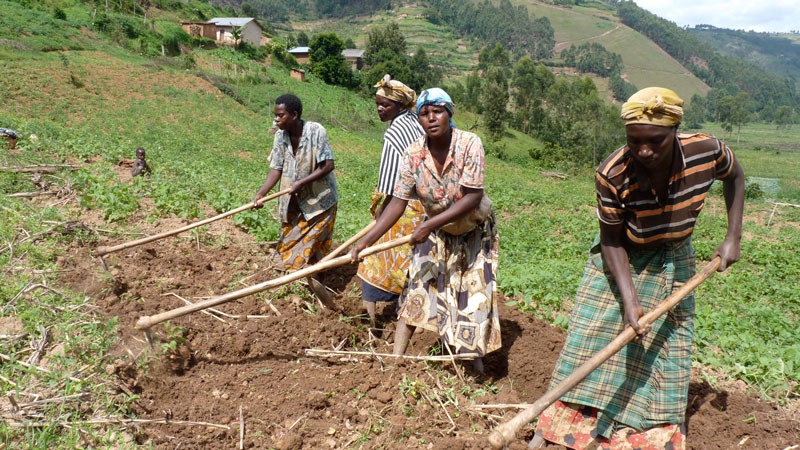
The cost of living today for Florence and other subsistence farmers is increasing, though she earns less on the market and no longer has access to indigenous cabbage.
“When you talk of the price,” says Florence, as she bends to bury a cabbage seedling’s roots in the black soil, “farmers are being over exploited.”
The impact of the SAPs in Uganda did succeed at increasing food production and the national GDP, but only at the expense of the country’s 80 per cent majority of subsistence farmers, whose production costs ate up their return profits and whose well-being actually deteriorated. The Kigezi Healthcare Foundation in Uganda estimates that 60 per cent of children under five years old in Florence’s village of Nyakiju are suffering from malnutrition and stunted growth.
The Abahingi of southwestern Uganda are natural organizers. They form digging groups with other female neighbours, friends, and relatives, and they meet monthly to share ideas and frustrations, plan for their communal plots, and delegate days to clear, plant, weed, and harvest together. These Indigenous groups support one another through seed, tool, and labour exchanges. Their major challenge today is political and economic marginalization by the Ugandan government.
Florence and her group lack pathways to effectively communicate their needs and lobby for government support. In a sample survey of 10 households in Florence’s village, only 15 per cent of farmers had ever participated in government training or received inputs from the National Agriculture Advisory Service, with 100 per cent of those farmers claiming that the seeds and livestock they received (the “improved” varieties) died.
The farmers who do have access to lobby the Ugandan government are not the “people who dig” but small farmers who pay others to work their land. The G8’s New Alliance for Food Security and Nutrition will, indeed, work for this minority of farmers in Uganda. Unfortunately, it won’t work for Uganda’s majority of subsistence farmers, whom malnutrition hits the hardest.
The G8 seems not to have connected the causal dots between privatization and poor health, between malnutrition and poverty. Or perhaps, as Patel asserts, the erasure of history was part of the plan. Either way, the G8’s New Alliance for Food Security and Nutrition looks and sounds a lot like yesterday’s SAPs – offering false promises that more food means less malnutrition for Africa’s poorest farmers. In reality, it’s an old game of dressing up the wolf of privatization in the sheep’s clothing of aid to crack open new global markets, while women like Florence crack open the ground to feed their families.



